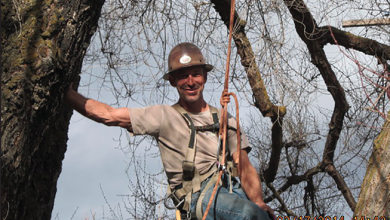The Ten Commandments
My goal for this month’s article is to provide a professional’s insight to the layperson regarding the relative health of trees on their property, or any tree, anywhere, really. Considering the simple fact that EVERY tree is a different being, (yes, even clones) we should expect to find a tree or cultural condition that might not quite meet the criteria of my descriptions included below. This is a very general guide, and I will try to make it as simple as possible. This is the “punch list” I will use when I examine your tree…
1. Root Collar Condition and/or Presence
Mature trees (with very few exceptions) should have a readily defined flare or buttress where the tree enters the earth. If the tree has a “stove pipe” appearance (no flare) this most likely indicates a grade change or “fill”, or it has been planted too deep, or the tree may have settled after planting. Exposing the Root Collar either by “gentle” excavation, or replanting, if it is a newly planted tree, is in order here.
2. Branch or Top Dieback
Dieback from the extremities of branches can be associated with maladies within the root zone. These may include over or under watering, mechanical damage (trenching, compaction, etc.), or pathogens within the root zone or canopy.
3. Splitting or Cracks on Stem or Limbs
Not to be confused with expansions of vigor, this may be corrected by through-bolting and/or propping, or end weight reduction by pruning.
4. Excessive Sprouting
Typically a response to over-pruning. The exceptions to this are the pruning of fruit production, and “formal” pollarding. Proper pruning over time can correct this in most cases.
5. Unnatural Lean
Accompanied by a “heaved” appearance of the soil at the root collar opposite the lean, especially in conifers.
6 Premature Fruit or Early Leaf Drop
An indication of stress associated with insufficient irrigation, excessive soil temperature, or airborne pathogens.
7. Oozing Sap on Conifers and Broad leafs
May indicate the presence of boring insects. “Sawdust” may be seen as well.
8. Movement at Ground Level
Established trees should not “rock” back and forth at ground level. This shows that the roots grip on the soil has failed and total tree failure is probable.
9. Included Bark
Tight “V” shaped crotches are a common cause of failure. This may be countered by pruning, bolting, or removal of offending stem or limb.
10. Fruiting Bodies of Fungus on or Near Your Tree
Conks or shelf fungus on the trunk is indicative of deep decay within the main stem. Mushrooms on the ground near the base of your tree may be associated with various types of crown/root rot.


